The 25 Best Movies of 2016 (So Far)
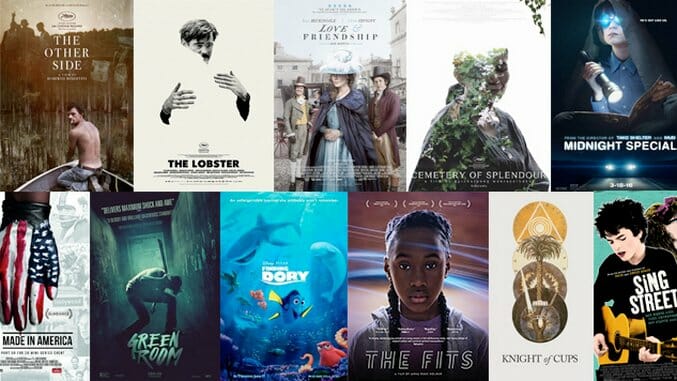
Going to the movies in 2016 seems so far like a matter of having one’s expectations filled. Whether that’s a good thing or not, whether it’s the work of the Hype Machine or some other malevolent force, rarely anymore can any reasonably informed human being pay $15 for a movie ticket and have no idea what they are about to see. Whether it’s a Coen Brothers farce, a Whit Stillman comedy of manners, a Pixar sequel, a movie starring Fat Colin Farrell (thus signaling his career’s “mature” phase), a Richard Linklater lark, a John Carpenter-ish potboiler, a superhero film with a plangent political message and daddy issues that isn’t directed by Christopher Nolan, an existential riff on masculinity that also happens to be a two-hander with a horny farting corpse, or more than one era-defining documentary, the best films from the first half of 2016 have been those which give viewers plenty to be surprised—even optimistic—about.
With that in mind, after extensive debate, soul-searching and compromise, here are the Paste Movies staff’s picks for the 25 Best Films of 2016…so far.
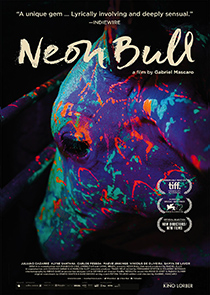 25. Neon Bull
25. Neon Bull
Director: Gabriel Mascaro
Brazilian director Gabriel Mascaro has very quickly followed up his festival favorite, August Winds, with Neon Bull, which walks some of the same territory as its predecessor. Cowboy Iremar (Juliano Cazarre) works on the ranch owned by Galega (Maeve Jinkings), but his real passion is, believe it or not, fashion design. Meanwhile, Galega is a tough, no-nonsense boss who only occasionally takes time to indulge her feminine side (although both times she does so are extremely memorable). If you think Mascaro is playing with gender roles here, you’re right, but that examination always comes second to a more humanistic, almost documentary approach to observing the minutiae of his subjects’ lives. It’s a wonderful combination. —Michael Dunaway
 24. Rams
24. Rams
Director: Grímur Hákonarson
Though they share a homestead upon which their prized lineage of sheep has been grazing for generations, graying brothers Gummi (Sigurður Sigurjónsson) and Kiddi (Theodór Júlíusson) haven’t spoken in 40 years. Setting them as quiet specks against one gorgeous Icelandic vista after another, director Grímur Hákonarson never once attempts to explain why they’ve grown apart, but it hardly matters: If you’ve ever endured a long-held grudge amongst family members—as we all have, seemingly—then you know that the origins of the schism rarely bear such interminable silence. Instead, when Gummi, the ostensibly more responsible one, discovers that his brother’s flock is showing signs of a fatal illness that threatens to take out the sheep population of their whole valley community, he sets in motion a government intervention that might as well drive them even further apart. Both devastating and playful, heartbreaking and wistful, Rams carefully picks at the bonds of blood and brotherhood, wondering how far we can stray from such essentially unselfish connections before we start to lose all sense of self. —Dom Sinacola
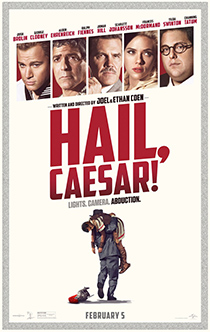 23. Hail, Caesar!
23. Hail, Caesar!
Directors: Ethan Coen, Joel Coen
The period zaniness of Joel and Ethan Coen’s latest is an ode to old Hollywood—and much more—as only they can do, tracing the efforts of James Brolin’s studio scandal fixer through a parade of 1950s soundstages, back lots and actors. His latest potential headline concerns the abduction of a Biblically epic movie star—George Clooney having a helluva good time doing his best Chuck Heston/Kirk Douglas amalgam—by what turns out to be a tea sandwich-serving think-tank of communists. Other subplots have Scarlett Johansson’s starlet plotting out her unwed motherhood in the public eye and the screen makeover of an unsophisticated cowboy by Ralph Fiennes’ debonairly enunciating director, Laurence Laurentz. There are dueling gossip columnist twins (Tilda Swinton pulling double duty), a hapless film editor (Frances McDormand) and scattered movies-within-the-movie, which even pauses midway through for a thoroughly enchanting—and cheeky—Gene Kelly-styled song-and-dance number starring Channing Tatum as a heavily made-up matinee star with controversial extracurricular activities. Most of the main characters/performances take blatant inspiration from Hollywood legends of yore, and the cast seems to have as much fun as the Coens. Hail, Caesar! is by no means their best work, but it’s characteristically gorgeous, spiritedly acted and rife with political, religious and creative (sub)text for moviegoers as thoughtful and dorky as Joel and Ethan themselves. —Amanda Schurr
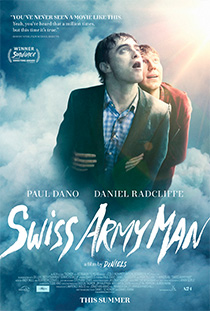 22. Swiss Army Man
22. Swiss Army Man
Directors: Daniel Scheinert, Dan Kwan
It should be ridiculous, this. A buddy comedy built atop the premise of a man (Paul Dano) lugging around, and bonding with, a flatulent talking corpse (Daniel Radcliffe)—but cinema is a medium in which miracles are possible, and one such miracle occurs in Swiss Army Man. A film with such a seemingly unpalatable concept becomes, against all odds, a near-profound existential meditation. And, for all the increasingly absurd gags about the utilities of that talking corpse’s body—not just as a jet-ski propelled by bodily gas, but as a giver of fresh water through projectile vomiting and even as a compass through its erection—there’s not one iota of distancing irony to be found in the film. Directors Daniel Scheinert and Dan Kwan are absolutely serious in their attempts to not only re-examine some of the most universal of human experiences, but also explore the idea of a life lived without limits, casting off the shackles of societal constraints and realizing one’s best self. It’s a freedom that the Daniels project exuberantly into the film itself: Swiss Army Man is a work that feels positively lawless. Witness with amazement what bizarrely heartfelt splendors its creators will come up with next. —Kenji Fujishima
 21. Captain America: Civil War
21. Captain America: Civil War
Directors: Joe & Anthony Russo
As the MCU enters if not maturity, at least its late adolescence, its greatest achievement as embodied in Captain America: Civil War may lie in a continued absence rather than in the presence of something. Watching an MCU film is an act that’s free from unnecessary distractions related to characters and source material. Captain America looks and acts like Captain America. And that’s been true in all five films in which he’s appeared. The same is true for Ant-Man (Paul Rudd)—Scott Lang version—who has appeared now in two films, and even for Black Panther (Chadwick Boseman) with just a mid-sized, if important, role in one. Meanwhile, at other studios, the failure to seemingly even understand the core nature and appeal of their characters means every one of their films has moments that cause both fans and new viewers alike to scratch their heads. “Um, why did Superman just let his father die?” “Wow, Batman just totally killed some guys.” “Oh my god, what have they done to Dr. Doom (twice!)/Galactus?!” For many, the distractions build and clutter and puncture both the anticipation for and enjoyment of these films. In addition to everything else it’s done right, Marvel Studios continues to get out of the way of its own characters.
If one thinks of the each MCU film as a juggling act—and each hero’s origin, “flavor” and power set as its own subset of items that must be kept in motion and in proper relation with each other—then as a series both Avengers films and Captain America: Civil War can be seen as an escalation of the routine that’s as impressive as it is necessary. After all, with each additional hero added, with each additional demand placed on the script in both action and dialogue, Kevin Feige and company are building toward Infinity. —Michael Burgin
 20. Everybody Wants Some!!
20. Everybody Wants Some!!
Director: Richard Linklater
Everybody Wants Some!! is intended to play like a spiritual companion piece to Linklater’s ’70s-era Dazed and Confused, with the writer/director reveling in his turn-of-the-decade’s style and swagger. Big lapels, bigger hair, even bigger facial hair and outright enormous egos are the norm throughout this nostalgic saga. Boasting little in the way of plot, Linklater’s film is content to sidle up alongside Jake and his new friends to see where their appetites, whims and libidos will lead. And its laid-back vibe pays dividends as it progresses, given that one-note characters who initially appeared to be smug louts, hyper-gonzo wild cards, dim-bulb doofuses or inane hillbillies slowly develop semi-distinct personalities of their own. Their days devoted to slacking off, their nights spent trimming mustaches and dousing themselves in cologne before hitting the town in search of the next woman to bed, Linklater’s play-hard-and-party-harder characters are the embodiment of cocksure macho vitality, all of them rightly convinced that, at least for the moment, they have the world by the balls. But there’s also some requisite team-based hazing thrown in for good measure, which feels like an authentic representation of what dudes like this would be up to—and, consequently, serves as a buzzkill reminder of their fundamentally dude-bro nature. —Nick Schager
 19. Last Days in the Desert
19. Last Days in the Desert
Director: Rodrigo García
In one of the most controversial scenes in Martin Scorsese’s landmark examination of the duality of flesh and spirit, The Last Temptation of Christ, Jesus (Willem Dafoe) speaks to Judas (Harvey Keitel) after addressing a fanatical crowd out for blood. He says, “I wanted to kill them, but out came the word, ‘love’.” It’s a moment that’s been decried as blasphemy by some, but for others it’s one of the greatest cinematic moments showing how a Christ figure reveals his limits.
It’s hard to be a god, or at least that’s what film has shown us for decades amidst various interpretations of Jesus moping, questioning his own capacity for sin, for decency and for having to shoulder the weight of the sins of our fathers. Rodrigo García’s Last Days in the Desert is yet another exploration of the antagonistic relationship between temptation and some kind of ultimate good, and it wouldn’t be a huge stretch to imagine that it takes Scorsese’s infamous scene as a thematic foundation of sorts. Granted, García’s vision is anything but transgressive, even if The Last Temptation of Christ is practically dogmatic compared to the spiritual endurance test imagined by Last Days in the Desert. But both interpretations have a refreshing openness to the purpose behind worshipping a God who demands so much pain and suffering, as well as to an equally flexible view of the Devil. Though García’s film isn’t a new perspective, that doesn’t mean it’s not moving, especially in bringing out the loneliness underlying the messiah complex. And while so many interpretations of Jesus life are so explicitly concerned with underlining his superhuman resilience, Last Days in the Desert is a meditation about the moments between all that suffering. —Michael Snydel
 18. Miles Ahead
18. Miles Ahead
Director: Don Cheadle
Director/actor Don Cheadle dismissed a pitch for a conventional biopic structure and instead suggested making a film that captures the essence of Miles Davis’s spirit by bucking the biopic form—a film in which, as Cheadle tells it, Davis himself would want to star. Everyone got on board, so Cheadle proceeded to co-write, direct and star in what now amounts to a piece of Miles Davis fan fiction: Miles Ahead is a caper film with a refreshing sense of creative authority, chutzpah and goodwill. A musician in his past life, Cheadle makes a striking transformation in his role, parading a crown of Jheri curls and straining and rasping his voice to the point that he and Davis are indistinguishable. In that spririt, Miles Ahead is massively entertaining but guided with a shaky hand, at times overly stylized and others stiflingly formulaic, a film whose quest for innovation within its genre may have outpaced its ability to deliver. During a rehearsal scene, Davis implores his band to “be wrong strong,” one of the many callbacks to Davis’s passion for improvisation. If Cheadle meant to communicate the messy rebelliousness of jazz music, then he succeeded through a messy rebellion of cinema. —Melissa Weller
 17. Chevalier
17. Chevalier
Director: Athina Rachel Tsangari
Nearing the end of a sort of luxury fishing vacation on the Aegean Sea, six friends—to varying degrees of allegiance to that word—attempt to quantify their worth as men by engaging in a game in which each person serves as contestant, judge and jury to determine who is “best at everything.” Each round can take any form: There is the requisite dick-measuring, of course, but there is also the assembling of Ikea furniture or the calling of loved ones, to the point that every gesture, word and interaction is judged to an obscene degree, each contestant carrying a small notebook in which he jots down a series of points, assigned according to no discernible structure. And director Athina Rachel Tsangari refuses to limn that structure with logic—to each his own, she insists, to the point that all subjectivity is erased in thrall to an absurd idea of whatever it means to be a man. All of the men do agree on a winner, but not before excruciating embarrassment, humiliation and emasculation takes each character down a peg or two, climaxing in a pathetic act of violence which serves absolutely no one. Chevalier may be an unexpected examination of a nation in depressing economic straits, drawing lines between money and masculine validation, but that it’s also directed by a woman (still proving herself to be one of Europe’s contemporary masters) makes the film an especially hilarious bloodletting of the male ego. —DS
 16. Notfilm
16. Notfilm
Director: Ross Lipman
Some movies are the happy accident of mismatched collaborators who, against the odds, produce a masterpiece forged in the fire of their creative clash. Then you have Film, a misbegotten 1965 avant-garde short put together by famed playwright Samuel Beckett and desperate-for-a-paycheck Buster Keaton. In the revelatory documentary Notfilm, director Ross Lipman excavates this little-remembered curio, talking to everyone from cinematographer Haskell Wexler to film historian Leonard Maltin to create a mosaic about celluloid, thwarted ambitions and the reasons why movies still enrapture us after so many years. This is a gift for film-lovers, even if you’re not a Film-lover. —TG
-

-

-

-

-

-

-

-

-

-

-

-

-

-

-

-

-

-

-

-

-

-

-

-

-

-

-

-

-

-

-

-

-

-

-

-

-

-

-

-

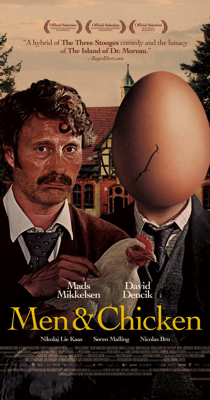 15. Men & Chicken
15. Men & Chicken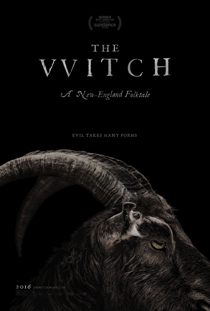 14. The Witch
14. The Witch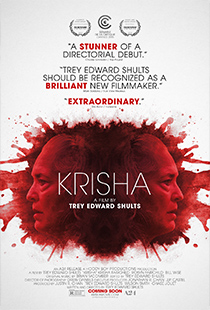 13. Krisha
13. Krisha 12. Weiner
12. Weiner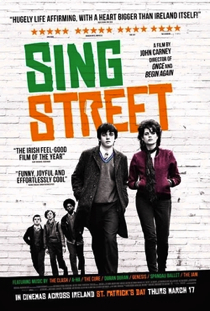 11. Sing Street
11. Sing Street 10. Knight of Cups
10. Knight of Cups 9. The Fits
9. The Fits 8. Finding Dory
8. Finding Dory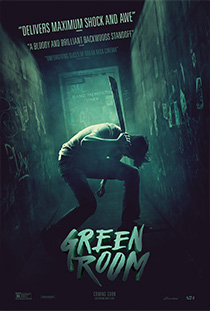 7. Green Room
7. Green Room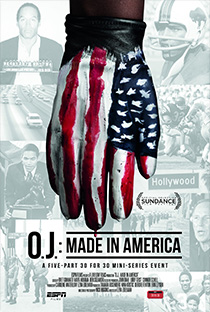 6. O.J.: Made in America
6. O.J.: Made in America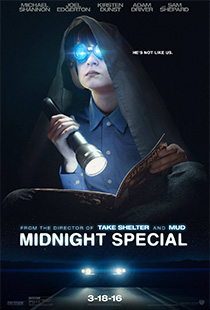 5. Midnight Special
5. Midnight Special 4. Cemetery of Splendor
4. Cemetery of Splendor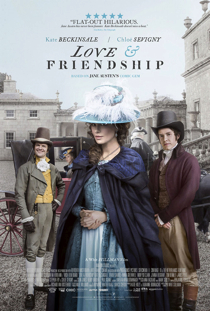 3. Love & Friendship
3. Love & Friendship 2. The Lobster
2. The Lobster 1. The Other Side
1. The Other Side






































